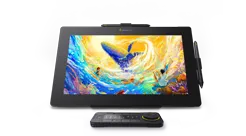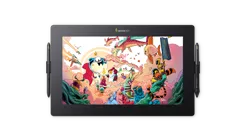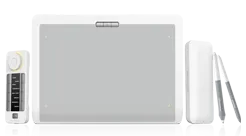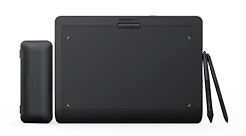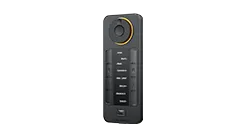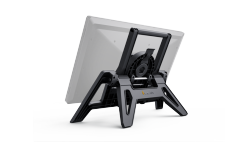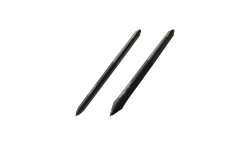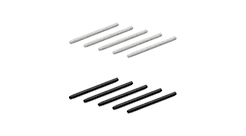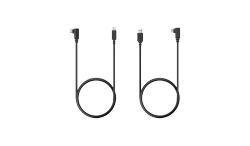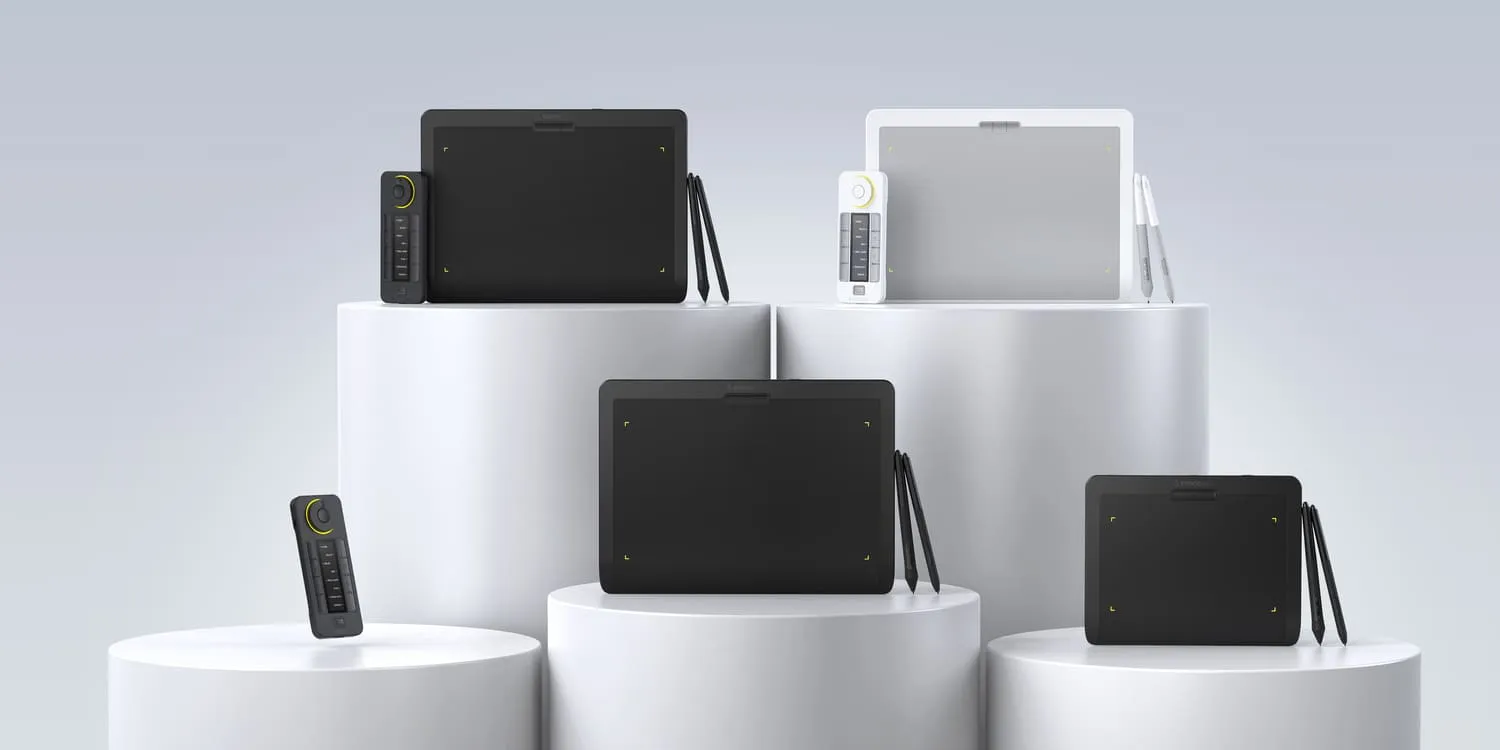Are you looking at display tablets for drawing? Drawing tablets are ideal for hobbyists and traditional artists,thanks to their unique ability to imitate the feel of natural paper and pen. However, graphics tablets offer traditionalists and graphic design artists unique features and benefits.
These two types of digital art tablets have a few key differences. For example, a drawing tablet has an integrated screen, while a graphics tablet may not. To learn more about their differences, continue reading the following article.
What is a Graphic Tablet?
A graphic drawing tablet is a computer input device that can be used to hand-draw images, animations,and graphics. It typically comes with a pen-like stylus, much like how you might draw with a pencil and paper. Graphics tablets are used for various other purposes, but we'll focus on their use in drawing designs for this article.
Basic Features of A Graphic Tablet
Pressure Sensitivity: The thickness and opacity are based on the pressure on the stylus.
Resolution: Higher LPI means more detailed and accurate artwork.
Active Area: The drawing space on a graphic tablet is larger, allowing for more detailed work.
Stylus/Pen: Detects pressure and tilt may have programmable buttons.
Connectivity: Connects via USB, Bluetooth, and wireless.
Title Sensitivity: Detects the stylus angle for a dynamic brush stroke.
Express Keys: Customizable buttons for shortcuts.
Multi-Touch Capability: Allows zooming, panning, and rotating with fingers.
Application Areas
Digital Art and Illustrations: For creating detailed digital artwork.
Graphic Design: Used in logo creation, typography, and graphic elements.
Animation: For frame-by-frame animation, character design, and storyboards.
Photo Editing: For precise retouching and editing.
3D Modeling: For sculpting and detailing 3D models.
Advantages
Natural Drawing Experiences: Feels like traditional drawing tools.
Increased Precision: High resolution and pressure sensitivity.
Efficiency: Customizable keys and multi-touch streamline and workflow.
Versatility: Suitable for various artistic and professional tasks.
Portability: Lightweight and easy to carry.
These features are essential if you're using a graphic tablet for laptop animation or drawing. They'll transform your ability to draw effectively the way you envision.
What is a Drawing Tablet?
A drawing tablet, also known as a graphics tablet, has a surface and a stylus pen, making it the ideal tool for drawing. The image drawn by the artist appears directly on the tablet and computer screen.
Basic Features
Pressure Sensitivity: Allows for a varied line thickness and opacity based on stylus pressure.
Resolution: Higher LPI (lines per inch) for more detailed artwork.
Active Area: The drawing space on a tablet is slightly limited compared to a graphics tablet.
Stylus/Pen: Detects pressure and tilt may have programmable buttons.
Connectivity: Options include USB, Bluetooth, and wireless.
Tilt Sensitivity: Detects the angle of the stylus for dynamic brush strokes.
Express Keys: Programmable buttons for shortcuts and improved workflow.
Multi-touch Capacity: Allows for zooming, panning, and rotating with finger gestures.
Application Areas
Digital Art and Illustrations: Creating detailed digital artworks and illustrations.
Graphic Design: Designing logos, typography, and other graphic elements.
Animation: Frame-by-frame animation.
Photo Editing: Precise retouching and editing tasks.
3D Modeling: Sculpting and detailing 3D models in software like ZBrush and Blender
Education: Digital notetaking, interactive lessons, and document annotation.
Architectural Design: Drafting, modeling, and rendering architectural design.
Advantages of a Drawing Tablet
Natural Drawing Experience—Mimics traditional drawing tools for an intuitive experience.
Increased Precision—High resolution and pressure sensitivity for detailed work.
Efficiency—Customizable keys and multi-touch capabilities to save time.
Versatility—Useful for a wide range of applications from art to design.
Portability—Lightweight and easy to transport.
Ergonomics—Reduces strain on the wrist and hand compared to a mouse.
A digital art tablet offers a variety of benefits for artists. If you're trying to recreate another's artwork or build something from scratch, a drawing tablet is ideal. They are uniquely made for creating digital art, so they make the most sense, in general, for artists.
Key Differences Between Graphic Tablets and Drawing Tablets
Screen vs. Non-Screen (Pen Display Vs. Pen Tablet)
Graphic tablets can be divided into pen displays and pen tablets. Let's break down the differences.
Pen Display: A pen display, like Xencelabs Pen Display 24 and Xencelabs Pen Display 16, features a built-in screen that allows you to draw directly onto the display. This provides a more intuitive and natural drawing experience, closely mimicking traditional drawing on paper.
Pen Tablet: A pen tablet, such as the Xencelabs Pen Tablet Series, does not have a built-in screen. Instead, you draw on the tablet's surface, transferring the input to your computer monitor. You might need a bit more coordination, as you need to look at the screen as you draw on your tablet.
Precision and Pressure Sensitivity
Both pen displays and pen tablets offer high precision and pressure sensitivity levels, essential for creating detailed and expressive artwork. Xencelabs products, for example, provide excellent pressure sensitivity and accuracy, giving you fine control over the thickness of the lines you draw.
Pressure Sensitivity : High-pressure sensitivity enables the detection of subtle changes in stylus pressure, allowing for dynamic and varied strokes. If you want detailed, nuanced artwork, this is a requirement.
Precision: High resolution and precision ensure that every stroke is accurately captured, making Xcencelabs tablets ideal for professional artists and designers who prefer meticulous detail.
Price Range and Target Audience
The price range and target audience for graphic drawing and display tablets for drawing vary significantly.
Pen Display—Typically, pen displays are more expensive due to the integrated screen technology. They are aimed at professionals and serious hobbyists who require a more immersive and natural drawing experience. They allow for more intuitive creation in scenarios such as digital painting, hand-drawn doodles, signatures, etc.
Pen Tablet—Pen tablets are generally more affordable and can be a great starting point for beginners, students, and budget-conscious artists. They offer great functionality in graphic editing, photo retouching, illustration, and more without the high cost of a built-in screen.
Factors to Consider When Choosing Between Graphic and Drawing Tablets
Intended Use
If you're trying to decide between a graphic drawing tablet or just a drawing tablet, it's essential to consider how you plan to use the device.
Digital Art
For digital artwork and illustration, a pen display like Xencelabs Pen Display 16 offers a more immersive experience, allowing you to draw directly onto the screen.
Photo Editing
Both types of tablets are ideal for photo editing, but a pen display can provide more intuitive control for retouching and manipulation.
Notetaking
For general educational notetaking, a pen tablet from the Xencelabs Pen Tablet Series especially Xencelabs Pen Tablet Small is an excellent choice because of its functionality and affordability.
Compatibility
Ensure the tablet you choose is compatible with your existing hardware and software. Before purchasing, check out the tablet's operating system and software, such as Adobe Photoshop, Illustrator, Corel Painter, etc.
Budget and Value
Before you buy either a digital art tablet or a display tablet for drawing, consider your budget.
Pen displays, in general, are more expensive because of their integrated screen. However, they are ideal for professionals because of their display.
Conversely, pen tablets are more budget-friendly and offer loads of good features, which are perfect for beginners and hobbyists alike.
Making Your Choice
Choosing the best display tablets for drawing requires an understanding of the products and your own needs.
Regardless of your preference for either professional-grade tablets or beginner-level displays, Xencelabs has you covered. It is the best choice for all artists who pursue excellence in their artwork.
Their high quality, high sensitivity, and pen pressure are ideal for all levels of artists.
Conclusion
When searching for the best display tablets for drawing, it's critical to consider your unique preferences, drawing abilities, and budget. We hope this detailed guide gives you the insights you need to make an informed, intelligent decision for your next purchase of a graphic drawing or display tablet!



